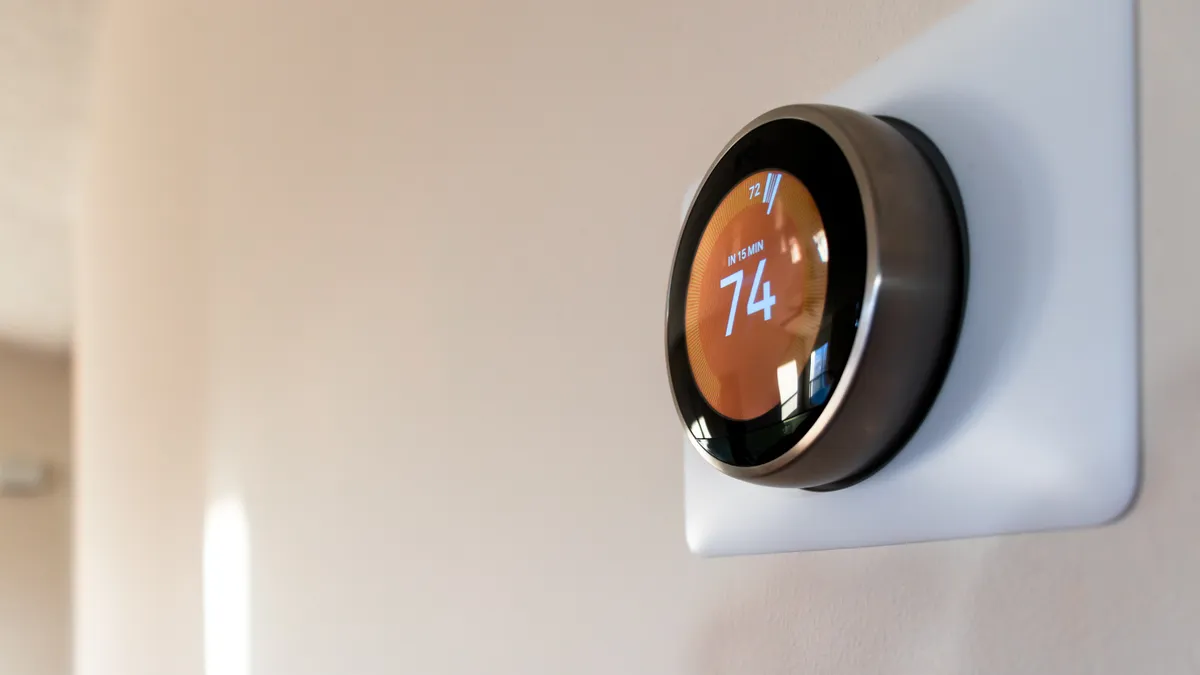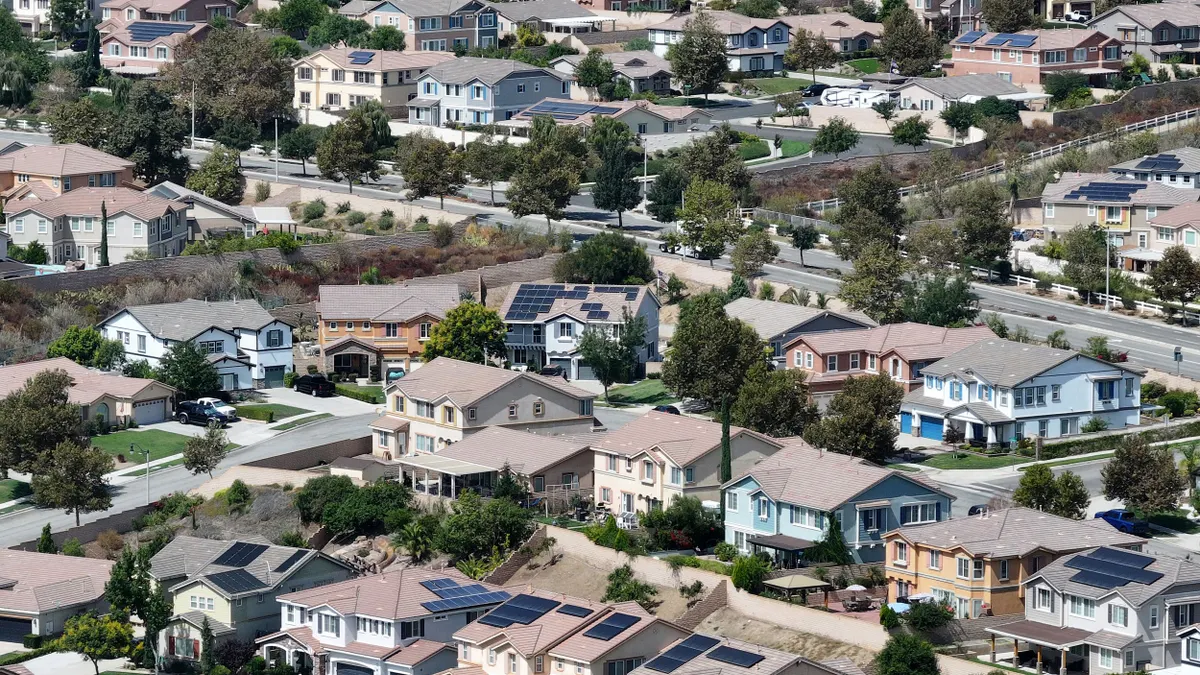This article is part of a series on the key issues driving the utility sector in 2019. All stories in this series can be found here.
Demand response has made significant strides as a resource in recent years, growing from an emergency-based program utilities hoped to never use, into a more holistic approach to grid management.
And as demand response has evolved, so have the resources and terminology. Industry analysts say 2019 is likely to be the year when utilities focus on adding new distributed resources to their demand response programs, creating Integrated Distributed Energy Resource systems that efficiently match supply with load.
"We say 'demand response,' but that includes both curtailment and generation, and it includes resources that are fully behind the meter as well as resources that export energy," Consolidated Edison's Shira Horowitz told Utility Dive.
With so many resources in the mix, Consolidated Edison says it now uses demand response for load forecasting and system planning — a trend likely to grow, but for now confined to more forward-looking energy providers.
"Not all utilities are at that point yet," said Horowitz. "Before you can get to that point, you need an established program that you can rely on."
So as the definition and use case of demand response shifts, what does 2019 hold for the sector?
Integration
Perhaps the biggest shift in the works will be the addition of more resources to the grid — more supply and load that can be influenced by utilities in order to balance the grid. Major opportunities in the near-term are likely to come from batteries and electric vehicles (EVs), say experts, along with distributed solar, smaller appliances and a mix of customer programs and rates.
"In the future, utilities will need to be able to manage all of those holistically, and think of how they all work together," said Julia Lundin, director of product marketing at Oracle, which in 2016 purchased cloud computing and behavioral demand response provider Opower.
Lundin said 2019 will see energy efficiency and distributed energy resources converge with demand response. Oracle is working on a Distributed Energy Resource Management System application that will help utilities merge demand-side strategies with broader distribution grid management.
All of this is converging, and Horowitz said 2019 may be the year when utilities begin to "really use distributed resources to optimize how we control the grid at the distribution level."

Julia Lundin
Director of Product Marketing, Oracle
There is an "increasing importance in the timing and location of savings," Lundin said. The changing value is now shifting toward peak reduction, she said, and demand response is now seen as a year-round resource.
All of this is converging, and Horowitz said 2019 may be the year when utilities begin to "really use distributed resources to optimize how we control the grid at the distribution level."
Navigant analyst Brett Feldman told Utility Dive utilities are developing larger packages of DER, aiming to operate electric systems in a much cleaner and more efficient manner, aligning load and supply to optimally consume resources.
Navigant is predicting a rapid rise in spending on Bring Your Own Device programs, driving an increasing number of connected devices.
But scaling up Integrated Distributed Energy Resource systems will eventually require moving beyond the integration of a handful of consumer technologies.
Growth of Bring Your Own Device programs
Bring Your Own Thermostat programs have become a mainstay of utility programs, and these are likely to grow and expand in 2019 to include both new customers, and a new array of devices.
"BYOT programs have been a growing trend and we see that continuing and extending beyond thermostats to other types of devices," Feldman said. "Eventually we'll get into connected appliances, but it will take time. ... EVs and storage will be the main ones over the next several years."
"We say 'demand response,' but that includes both curtailment and generation, and it includes resources that are fully behind the meter as well as resources that export energy."

Shira Horwitz
Consolidated Edison
Another big opportunity will be water heaters — either gas or electric — which utilities increasingly see as energy storage devices. Some manufacturers, said Feldman, are starting to make new water heaters with demand response capabilities built in.
Navigant worked with the Smart Electric Power Alliance and the Peak Load Management Alliance last year on the 2018 Utility Demand Response Market Snapshot. The report estimated 10.7 GW of demand response programs were dispatched in 2017, out of a total reported enrollment of 18.3 GW of capacity, based on program offerings from 155 utilities last year.
Switch-based air conditioning programs dominated the residential market, providing 3.4 GW of demand response capacity. Water heaters provided just 300 MW of DR capacity in 2017.
But while the future of BYOD programs may be more varied, for now, the biggest gains will remain focused on thermostats.
"Even though BYOT programs are growing, device-based programs still show high savings potential because few homes participate," said Lundin. "In the near-term, smart thermostats are the biggest opportunity, but longer-term this is definitely much bigger. We're looking for scalable solutions ... We don't want to design something that only reaches customers with one kind of thermostat."
Con Edison's Horowitz said the device space is set to change rapidly.
"There's a big shift on the mass market side, from legacy switch programs to more of a BYOT model," said Horowitz. "Utilities are still in a transition phase; they haven't all figured out how to scale the programs."
Natural gas demand response
Demand response was developed as a resource on the electric side, but particularly in the Northeast and West Coast, utilities are considering the same strategies to address pipeline constraints.
Con Edison recently launched a three-year gas demand response pilot as it faces "substantial, meaningful growth in peak day demand for natural gas," said Chris Raup, who heads the company's Utility of the Future team.
The utility serves the New York City area, and as new buildings are put up they are increasingly turning to natural gas for heat, as opposed to fuel oil. "We haven't had a new pipeline connect directly to our service territory since 2013," Raup said. "We've slowly eaten away at the gap between supply and demand."
The pilot is starting small, but Con Edison expects eventually demand response on the gas side can be used for planning and system management, the same as it is for the electric side.
"We deliberately kept it small the first year," said Horowitz. The utility has 39 commercial and industrial customers participating, and 190 residential customers. "The steepest learning is going to come in the first year."
Southern California Gas turned to demand response after a leak at the Aliso Canyon storage facility left the region facing potential gas shortages. More than 9,200 customers signed up, allowing SoCalGas to directly control almost 10,800 ecobee and Nest smart thermostats.
Lundin said Oracle has heard from some customers they are interested in gas demand response, but the need is not common outside of regions either shifting away from the fuel or facing constraints.
"We've heard interest but it is not widespread," said Lundin. Most of our clients "just don't have the same capacity constraints."
Continued interest in non-wires alternatives
The new wave of demand management strategies has allowed some utilities to defer infrastructure upgrades, sometimes staving off major investments for years. Con Edison is widely credited with piloting the approach with its Brooklyn-Queens Neighborhood Program.
Unveiled a few years ago, the utility deferred a $1.2 billion substation upgrade by contracting for 52 MW of demand reductions and 17 MW of distributed resource investments. The strategy involved harnessing a range of distributed resources and efficiencies rather than traditional capital investments.
"BYOT programs have been a growing trend and we see that continuing and extending beyond thermostats to other types of devices. Eventually we'll get into connected appliances, but it will take time. ... EVs and storage will be the main ones over the next several years."

Brett Feldman
Analyst, Navigant
"Non-wires alternatives will continue to attract interest," said Navigant's Feldman.
Horowitz said Con Edison has been able to integrate demand side management strategies into system planning and now the utility is looking at "integrating non-wires solutions into other places."
Integrated planning is "something our company is doing through the process of becoming a distributed service provider," said Horowitz, reflecting New York's efforts to shift the electric grid toward an open-access platform.
"We're on a path to go there, and I think demand response is one of the core pieces of that," she said.





















